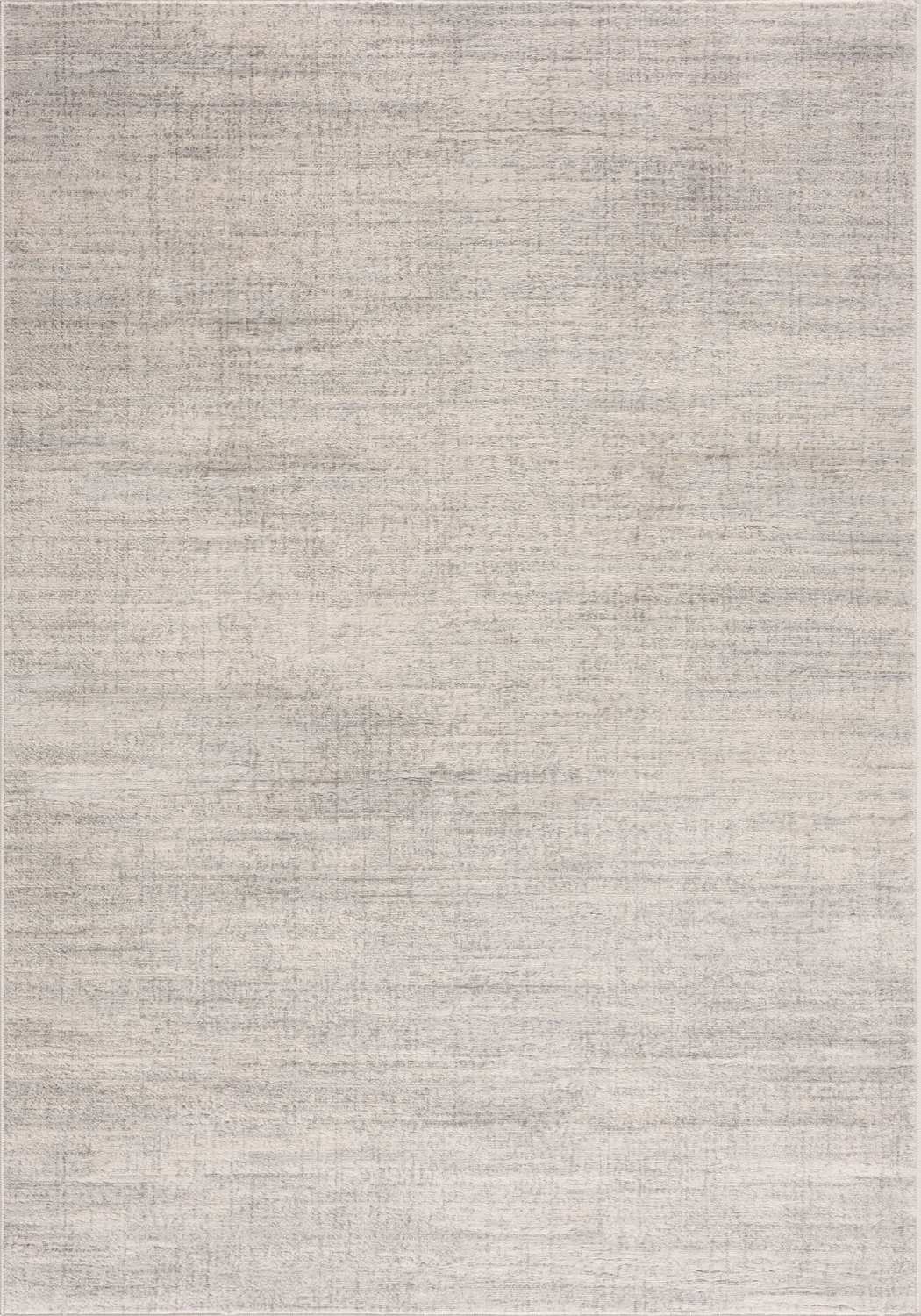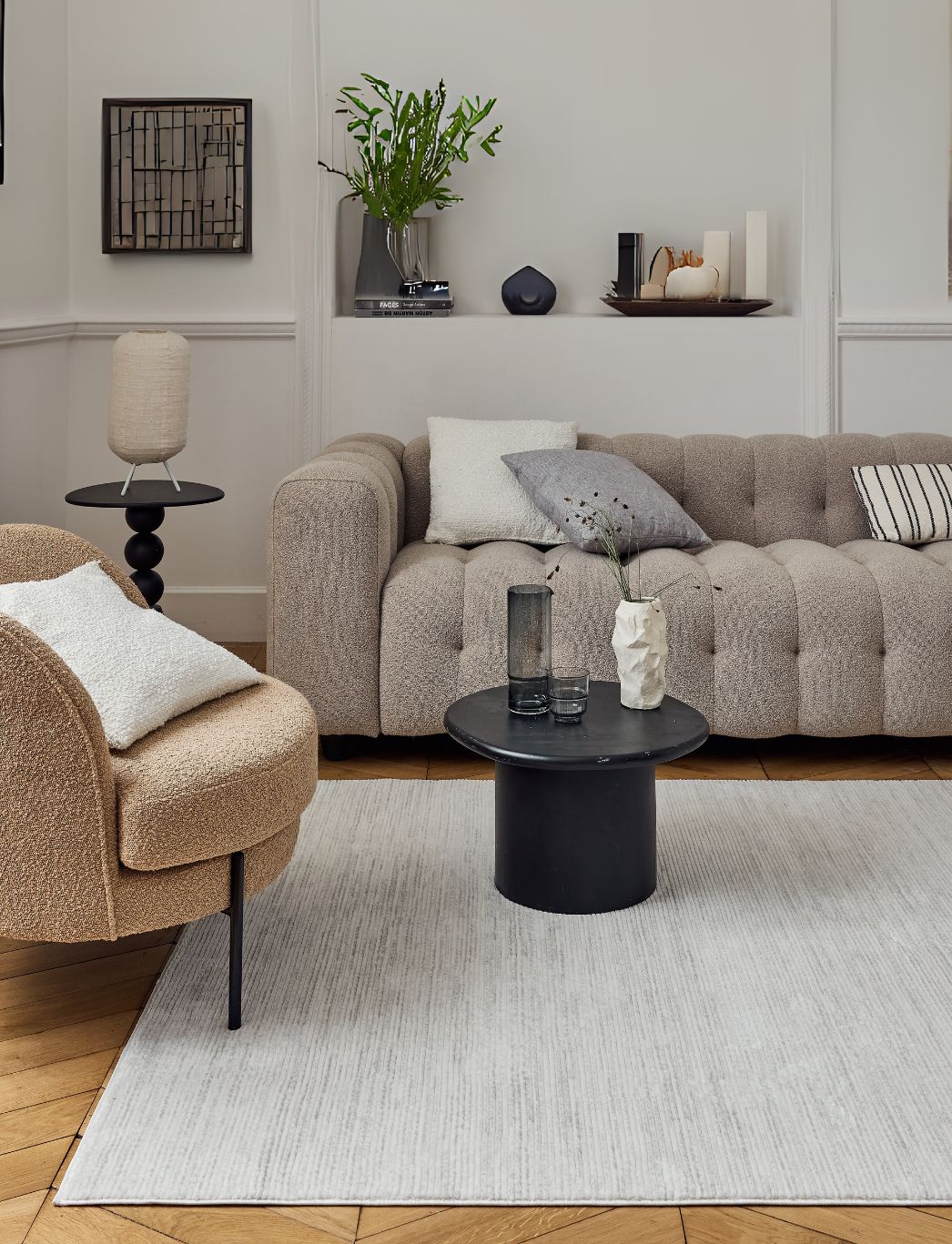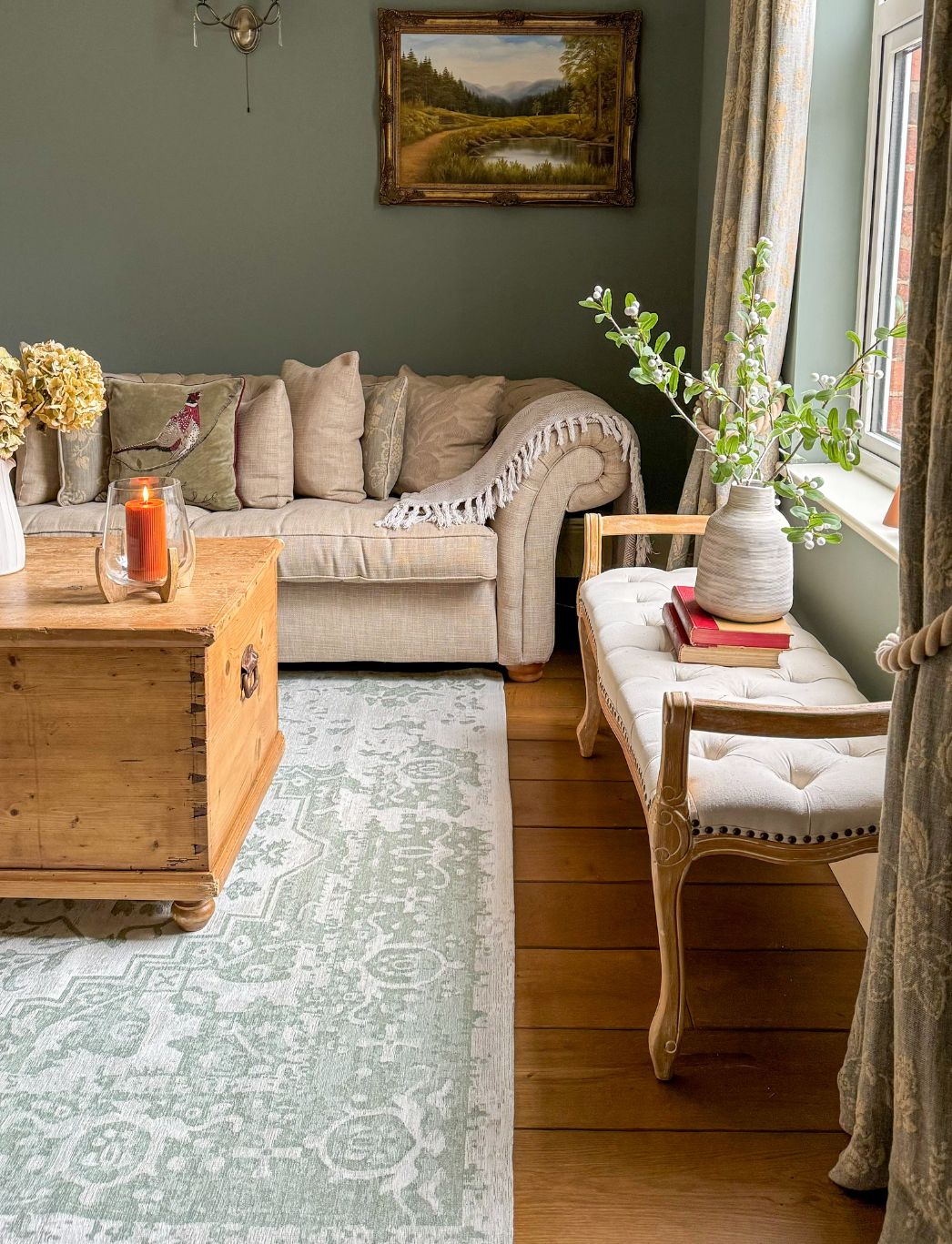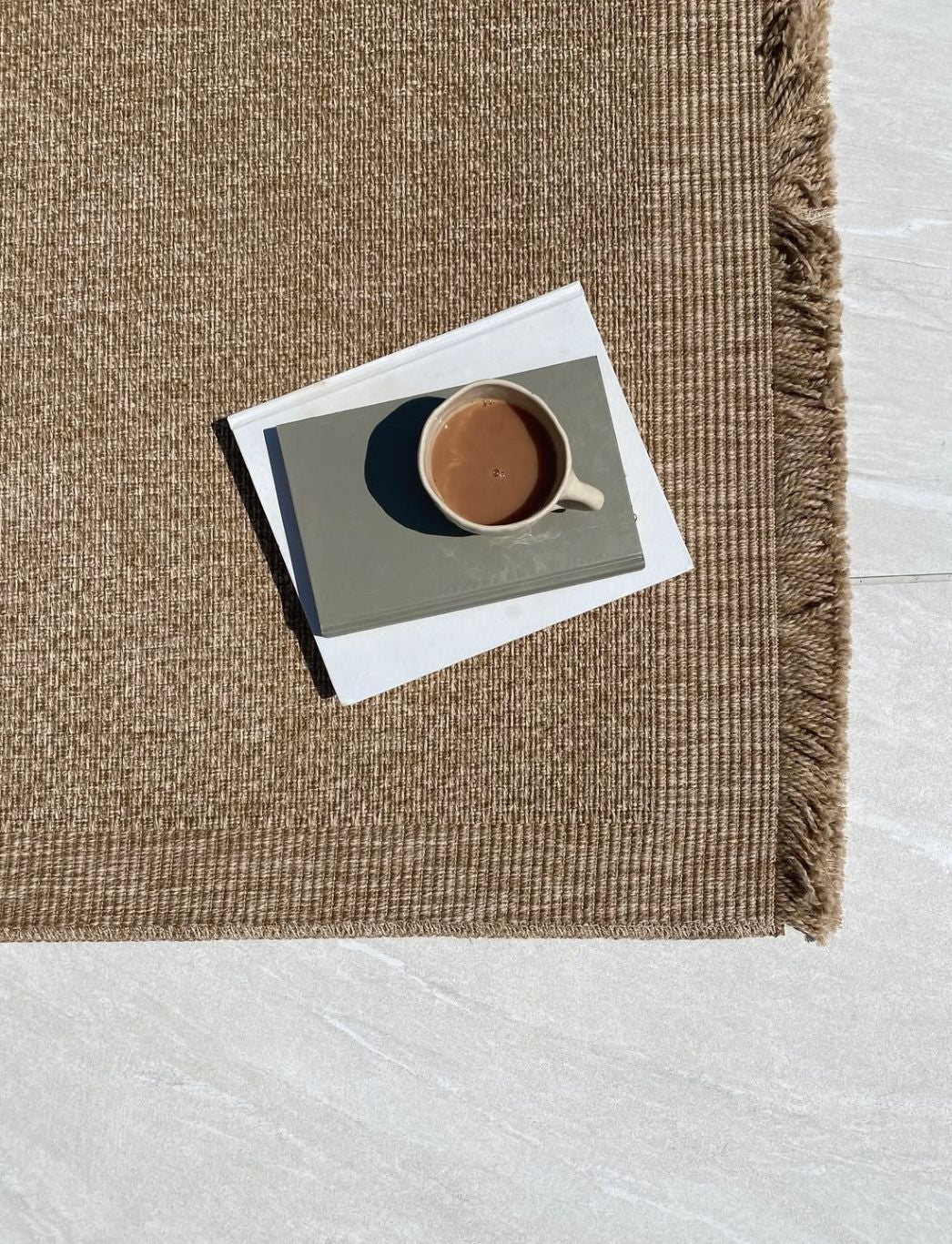A Comprehensive Guide to Rug Materials

Rugs are not just decorative pieces that tie a room together; they also serve as functional elements that provide comfort, warmth, and even sound insulation.
When selecting a rug for your home or office, it's essential to understand the various rug materials available and how they can impact both the aesthetics and functionality of your space.
In this comprehensive rug materials guide, we will explore the different types of rug materials, provide insights on choosing the right rug materials, and offer tips on maintaining them.
Types of Rug Materials
Rug materials are pivotal in determining a rug's appearance, durability, and feel. Each type of material offers distinct characteristics, making them suitable for various settings and preferences.
Here are some of the most common rug materials to consider:
1. Wool
Wool is a classic and popular choice for rugs due to its natural beauty and exceptional durability. Wool rugs are soft to the touch, have excellent stain resistance, and can withstand heavy foot traffic. They also provide insulation and help regulate indoor temperatures.
Wool rugs come in various styles, from traditional to contemporary, making them versatile for different interior designs.
2. Cotton
Cotton rugs are affordable, easy to clean, and lightweight. They are an excellent choice for casual and high-traffic areas.
Cotton rugs are often machine-washable. However, their durability is not on the same level as wool or synthetic options. Moreover, they may not hold their shape as well over time.
3. Synthetic Fibres
Synthetic rug materials include polypropylene, polyester, and nylon. These materials are known for their affordability, stain resistance, and colourfastness. They are ideal for homes with pets or children, as they can handle spills and heavy use.
Synthetic rugs are available in a wide range of designs and colours, offering plenty of options for every decor style.

4. Silk
Silk rugs exude luxury and sophistication. They are incredibly soft, have a subtle sheen, and feature intricate designs.
While silk rugs are undoubtedly beautiful, they require delicate care and are best suited for low-traffic areas or as decorative accents. They can be quite expensive due to the labour-intensive production process.
5. Jute and Sisal
Natural fibre rugs like jute and sisal are eco-friendly choices known for their texture and durability. They add a rustic and organic feel to a room.
These materials are less soft underfoot compared to wool or cotton, making them better for areas where comfort is not a primary concern.
They are excellent choices for casual, coastal, or bohemian-inspired interiors.
6. Leather
Leather rugs are unique and bring a touch of rugged elegance to a space. They are often used as statement pieces in contemporary or industrial-themed rooms.
Leather rugs are easy to clean and maintain, but they may not be as comfortable as softer materials. They work well in areas with low to moderate foot traffic.
Choosing the Right Rug Materials
Selecting the right rug material involves considering various factors, including your lifestyle, budget, and the room's purpose. Here are some essential tips to help you make an informed decision:
1. Lifestyle and Usage
Consider your daily life and how the rug will be used. If you have pets or children, stain-resistant synthetic materials might be the best choice.
In high-traffic areas like the hallway or the living room, opt for durable materials like wool or synthetic fibres. For low-traffic areas, like the bedroom, you should focus on comfort and aesthetics.
2. Budget
Rug prices can vary significantly based on the material, size, and craftsmanship. Determine your budget early in the decision-making process to narrow down your options.
Keep in mind that while silk and hand-woven wool rugs can be expensive, there are also affordable synthetic and natural fibre options available.
3. Style and Aesthetics
Consider the overall style of your space. Traditional rooms may benefit from wool or silk rugs with intricate patterns, while modern spaces might look best with sleek synthetic or leather options. The rug's colour and design should complement your existing decor.
4. Maintenance
Think about how much time and effort you're willing to invest in rug maintenance. Synthetic materials are generally easier to clean and maintain than natural fibres like wool or silk. Be realistic about your willingness to follow care instructions.
5. Size and Placement
Measure the area where you plan to place the rug and determine the appropriate size. A rug that's too small can make a room feel disjointed, while one that's too large may overwhelm the space. Consider rug placement, such as under furniture or as a central focus in an open area.
Conclusion
Choosing the right rug material involves careful consideration of your lifestyle, budget, and design preferences. By understanding the characteristics and maintenance requirements of different rug materials, you can make an informed decision that enhances the comfort and aesthetics of your space while ensuring the longevity of your rug investment.
Once you've chosen the right rug material, it's essential to maintain it properly to ensure its longevity and appearance. Here are some maintenance tips for various rug materials:
Whether you opt for the warmth of wool, the affordability of synthetic fibres, or the luxury of silk, you can find a wide variety of rugs at The Rugs. Visit us today to browse through our excellent rug collection for sale at significant discounts.
Rug Materials Comparison: Choosing the Right Fibre for Your Floor
When selecting a rug, understanding the characteristics of different materials is crucial. Natural fibres like wool, cotton, and silk offer luxurious textures and durability, while synthetic options such as nylon and polyester provide affordability and easy maintenance. Wool rugs excel in durability and natural stain resistance but can be more expensive. Cotton rugs are soft and easy to clean but may wear faster in high-traffic areas. Synthetic rugs offer excellent stain resistance and affordability but may lack the plush feel of natural fibres. Consider factors like foot traffic, maintenance requirements, and budget when comparing rug materials for your space.
Rug Materials to Avoid: Ensuring Quality and Longevity
While many rug materials offer excellent qualities, some should be approached with caution. Viscose or artificial silk rugs, while attractive, can be prone to shedding and are notoriously difficult to clean. Low-quality synthetic fibres may off-gas harmful chemicals and wear quickly. Untreated natural fibres like jute or sisal can be challenging to clean and may not withstand moisture well. When selecting a rug, prioritise materials known for their durability, ease of maintenance, and safety for your household.
Rug Materials to Avoid for Living Room: Ensuring Comfort and Durability
In the living room, where comfort and durability are paramount, certain rug materials may not be ideal. Delicate silk rugs can be impractical for high-traffic areas and are prone to staining. Rough natural fibres like sisal or seagrass, while durable, may not provide the softness desired in a living space. Cheaply constructed synthetic rugs can wear quickly and may not offer the plush feel underfoot that many seek in their main living area. Instead, opt for materials that balance durability with comfort, such as wool blends or high-quality synthetics designed for heavy use.
Rug Materials: Understanding Your Options for Floor Coverings
Rug materials encompass a wide range of options, each with unique properties. Natural fibres include wool, known for its durability and natural soil resistance; cotton, prized for its softness and washability; and silk, valued for its luxurious sheen. Plant-based fibres like jute, sisal, and bamboo offer eco-friendly options with distinctive textures. Synthetic materials such as nylon, polyester, and polypropylene provide durability and stain resistance at a lower cost. Blended materials combine the benefits of different fibres, offering a balance of qualities. Understanding these options helps in selecting the perfect rug for your specific needs and preferences.
Rug Materials That Don't Shed: Low-Maintenance Options for Clean Floors
For those seeking rugs that maintain a tidy appearance with minimal shedding, certain materials stand out. Tightly woven synthetic fibres like nylon and polyester are known for their resistance to shedding. Low-pile wool rugs or wool blends can offer the benefits of natural fibres with reduced shedding compared to their high-pile counterparts. Flatweave rugs, regardless of material, tend to shed less due to their construction. Polypropylene rugs are another excellent option, known for their durability and minimal shedding. When selecting a non-shedding rug, pay attention to both the material and the construction method to ensure the best performance.
Rug Materials Pros and Cons: Weighing Your Options for the Perfect Floor Covering
Understanding the advantages and disadvantages of various rug materials is essential for making an informed choice:
Wool:
Pros: Durable, naturally stain-resistant, luxurious feel
Cons: Can be expensive, may shed initially
Cotton:
Pros: Soft, affordable, easy to clean
Cons: Less durable than wool, may show wear in high-traffic areas

Synthetic (Nylon, Polyester):
Pros: Affordable, stain-resistant, durable
Cons: May lack the plush feel of natural fibres, potential for static
Silk:
Pros: Luxurious appearance, soft texture
Cons: Expensive, delicate, difficult to clean
Jute/Sisal:
Pros: Eco-friendly, unique texture
Cons: Can be rough underfoot, challenging to clean
Consider your specific needs, budget, and the rug's intended location when weighing these pros and cons.
Rug Materials Explained: A Comprehensive Guide to Floor Covering Fibres
Understanding rug materials is crucial for selecting the perfect floor covering for your space:
Wool: A natural fibre known for its durability, softness, and natural soil resistance. It's warm, luxurious, and biodegradable.
Cotton: Soft, affordable, and easy to clean, cotton rugs are ideal for casual spaces and are often machine washable.
Synthetic Fibres (Nylon, Polyester, Polypropylene): These man-made materials offer excellent stain resistance, durability, and affordability. They're ideal for high-traffic areas and homes with children or pets.
Silk: Prized for its lustrous appearance and soft texture, silk is a luxurious but delicate option best suited for low-traffic areas.
Natural Plant Fibres (Jute, Sisal, Seagrass): These eco-friendly options offer unique textures and a natural look but can be challenging to clean and may be rough underfoot.
Viscose/Artificial Silk: Offers a silk-like sheen at a lower cost but is less durable and can be difficult to clean.
Understanding these materials helps in selecting a rug that meets both your aesthetic preferences and practical needs.
Rug Material Texture: Exploring Tactile Qualities of Floor Coverings
The texture of a rug plays a crucial role in both its appearance and feel underfoot. Wool rugs offer a plush, warm texture that's soft to the touch. Cotton rugs provide a smooth, comfortable surface ideal for bare feet. Silk rugs boast a luxurious, sleek texture with a distinctive sheen. Synthetic fibres can mimic various textures, from plush to smooth, depending on their construction. Natural plant fibres like jute and sisal offer a more rustic, textured feel that adds visual interest to a space. High-pile rugs provide a deep, sink-in texture, while low-pile or flatweave rugs offer a smoother surface. Consider the desired ambiance and practical needs of your space when selecting a rug texture.
Rug Material for Living Room: Balancing Comfort and Durability
Choosing the right rug material for your living room involves balancing comfort, durability, and style. Wool is an excellent choice, offering natural resilience, comfort, and a luxurious feel underfoot. High-quality synthetic fibres like nylon or polyester can provide durability and stain resistance, ideal for homes with children or pets. Wool-synthetic blends offer a balance of comfort and practicality. For a softer, more casual look, cotton rugs can work well, especially in less trafficked areas. Consider the room's usage, your lifestyle, and maintenance preferences when selecting the perfect living room rug material.
Rug Material for Dining Room: Practical Elegance for Eating Areas
Selecting the right rug material for your dining room requires consideration of both style and practicality. Low-pile wool rugs offer durability and natural stain resistance, making them ideal for potential food and drink spills. Synthetic fibres like nylon or polypropylene provide excellent stain resistance and easy cleaning, perfect for busy dining areas. Flatweave rugs in cotton or wool-blend can offer a sleek look while allowing for easy chair movement. Avoid high-pile or shag rugs in dining areas, as they can make chair movement difficult and trap food particles. Consider darker colours or patterns to help conceal any potential stains between cleanings.
Rug Material for Kitchen: Durable Options for Culinary Spaces
Choosing the right rug material for your kitchen is crucial for both safety and practicality. Synthetic fibres like nylon or polypropylene are excellent choices due to their durability, stain resistance, and ease of cleaning. These materials can withstand frequent spills and heavy foot traffic common in kitchens. Indoor/outdoor rugs made from materials like polypropylene offer exceptional durability and moisture resistance. For a more natural option, consider flat-weave cotton rugs that are machine washable. Avoid materials like silk or high-pile wool that can be difficult to clean or maintain in a kitchen environment. Prioritise rugs with non-slip backings or use rug pads to ensure safety on potentially slippery kitchen floors.
Rug Material for Entryway: Durable First Impressions
The entryway rug is your home's first line of defence against dirt and moisture, making material selection crucial. Synthetic fibres like nylon or polypropylene offer excellent durability and easy cleaning, ideal for high-traffic entryways. Wool rugs provide natural dirt resistance and durability, though they may be a pricier option. Indoor/outdoor rugs made from materials like polypropylene can withstand moisture and heavy foot traffic. For a natural look, consider sisal or jute rugs, but be aware they may be more challenging to clean. Opt for darker colours or patterns to hide dirt between cleanings, and choose low-pile options for easier door clearance.
Rug Material for Cats: Pet-Friendly Floor Coverings
When selecting a rug material suitable for homes with cats, durability and ease of cleaning are key factors. Low-pile synthetic fibres like nylon or polyester resist snagging from cat claws and are easy to vacuum. Wool rugs naturally repel stains and odours, making them a good choice for pet owners, though they can be more expensive. Avoid loop pile rugs that can catch cat claws and unravel. Indoor/outdoor rugs made from polypropylene are highly durable and easy to clean, perfect for areas where cats frequent. Consider darker colours or patterns to help conceal any fur or minor stains between cleanings.
Rug Material for High Traffic: Durable Options for Busy Areas
Selecting the right rug material for high-traffic areas is crucial for longevity and maintaining appearance. Nylon rugs offer exceptional durability and resilience, making them ideal for busy spaces. Wool, while more expensive, provides natural durability and soil resistance, perfect for heavy use areas. Polypropylene rugs offer excellent stain resistance and durability at a lower cost, ideal for entryways or hallways. Low-pile or flatweave constructions in any material tend to withstand heavy foot traffic better than high-pile options. Consider darker colours or patterns to help conceal wear and tear between cleanings. Regardless of material, regular maintenance and rotation can help extend the life of rugs in high-traffic areas.

Rug Material for Bedroom: Soft Comfort for Restful Spaces
Choosing the right rug material for your bedroom involves prioritising comfort and creating a cosy atmosphere. Wool rugs offer natural softness and warmth, perfect for bare feet on chilly mornings. High-pile synthetic fibres can provide a plush, luxurious feel at a more affordable price point. Cotton rugs offer a soft, breathable option that's often machine washable, ideal for easy maintenance. For a touch of luxury, consider silk or silk-blend rugs, though these may require more delicate care. If allergies are a concern, opt for hypoallergenic synthetic materials or natural fibres treated for dust mite resistance. Remember to consider the rug's placement and size to ensure it complements your bedroom's layout and decor.
Rug Material for Bathroom: Moisture-Resistant Options for Wet Spaces
Selecting the appropriate rug material for bathrooms requires consideration of moisture resistance and safety. Synthetic materials like nylon or polyester offer excellent water resistance and quick-drying properties. Cotton rugs can be a good option if they're machine washable, allowing for frequent cleaning. Microfibre rugs are super absorbent and dry quickly, making them ideal for bath mats. Bamboo or wooden bath mats provide a spa-like feel and naturally resist mould and mildew. Avoid materials like silk or wool in bathrooms, as they don't handle moisture well. Regardless of material, ensure your bathroom rug has a non-slip backing or use a rug pad to prevent slipping on wet floors.
Rug Material for Pets: Durable and Easy-to-Clean Options
When choosing rug materials for homes with pets, durability and ease of cleaning are paramount. Synthetic fibres like nylon and polyester offer excellent stain resistance and are easy to vacuum, making them ideal for pet owners. Indoor/outdoor rugs made from polypropylene are highly durable and can withstand frequent cleaning. Low-pile wool rugs naturally repel odours and stains, though they may be more expensive. Avoid high-pile or shag rugs that can trap pet hair and dander. Darker colours or patterns can help conceal pet hair and minor stains between cleanings. Consider machine-washable options for easy maintenance. Remember to choose rugs with non-slip backings or use rug pads to ensure safety for your pets.

Rug Material for Nursery: Safe and Soft Options for Little Ones
Selecting the right rug material for a nursery requires a balance of softness, safety, and practicality. Wool rugs offer natural softness and durability, with the added benefit of being naturally flame-resistant. Organic cotton rugs provide a soft, hypoallergenic option that's often machine washable. Low-pile synthetic fibres can offer a good balance of softness and easy cleaning, ideal for inevitable spills. Look for non-toxic, VOC-free options to ensure a healthy environment for your baby. Avoid rugs with long fibres that could pose a choking hazard. Consider lighter colours or playful patterns to create a cheerful nursery atmosphere. Always ensure the rug is securely fastened to prevent slipping as your child begins to crawl and walk.
What Are the Best Rug Materials: Top Choices for Quality and Durability
The best rug materials combine durability, comfort, and aesthetic appeal. Wool is often considered the gold standard, offering natural resilience, softness, and soil resistance. High-quality synthetic fibres like nylon provide excellent durability and stain resistance, ideal for high-traffic areas. Polypropylene offers affordability and easy maintenance, perfect for outdoor or casual indoor use. Cotton provides a soft, natural option that's often machine washable. For luxury, silk or silk blends offer unparalleled softness and sheen. Natural plant fibres like jute or sisal provide eco-friendly options with unique textures. The "best" material ultimately depends on your specific needs, budget, and the rug's intended location.
What Rug Materials Are Non Toxic: Safe Options for Health-Conscious Homes
For those prioritising a non-toxic home environment, several rug materials stand out as safer options. Untreated wool is naturally non-toxic and resistant to flames, mould, and mildew. Organic cotton rugs are free from harmful pesticides and chemicals. Jute, sisal, and seagrass are natural plant fibres that are inherently non-toxic. Look for rugs with GreenGuard certification, which ensures low chemical emissions. Undyed or naturally dyed rugs avoid potentially harmful synthetic dyes. When choosing synthetic options, look for low-VOC (Volatile Organic Compound) certifications. Be cautious of rugs treated with stain-resistant chemicals, as these can contain harmful PFAs. Always verify the manufacturer's claims and certifications when seeking non-toxic rug options.
What Rug Materials Are Toxic: Materials to Avoid for a Healthier Home
When considering rug materials, it's important to be aware of potentially toxic options. Synthetic rugs treated with flame retardants can off-gas harmful chemicals. PVC-backed rugs may contain phthalates and other harmful plasticisers. Rugs with stain-resistant treatments often contain PFAs (per- and polyfluoroalkyl substances), which are linked to health concerns. Some synthetic dyes, particularly in brightly coloured rugs, can contain toxic compounds. Formaldehyde is sometimes used in the manufacturing process of certain synthetic rugs. Adhesives used in rug backings can also emit VOCs (Volatile Organic Compounds). When shopping for rugs, look for certifications like GreenGuard or Oeko-Tex Standard 100, which indicate lower levels of harmful substances.
People Also Asked
What material should your rug be?
The ideal rug material depends on your specific needs. Natural fibers like wool and cotton offer durability and softness, while synthetic materials like nylon and polypropylene are more affordable and stain-resistant.
What is the best quality material for a rug?
Wool is widely considered the best quality material for rugs due to its durability, softness, and natural stain resistance. It's also eco-friendly and fire-resistant.
What material is used to make rugs?
Rugs are made from a variety of materials including natural fibers (wool, cotton, silk, jute) and synthetic fibers (nylon, polyester, polypropylene). The choice depends on the desired characteristics and budget.
How can you tell what material a rug is made of?
You can identify rug materials by examining the fibers closely, performing a burn test (with caution), or checking the manufacturer's label. Professional appraisers can also help identify materials accurately.
How can you tell if a rug is high-quality?
High-quality rugs typically have dense, tightly woven fibers, even patterns, and sturdy backing. They also feel substantial and have a luxurious texture. The price and brand reputation can also indicate quality.
What rug material lasts the longest?
Wool and nylon are known for their exceptional longevity. Wool rugs can last for decades with proper care, while nylon offers excellent durability in high-traffic areas.
Is polyester better than polypropylene rug?
Both have pros and cons. Polyester is softer and more stain-resistant, while polypropylene is more durable and fade-resistant. The choice depends on specific needs and preferences.
What is the best thickness for a rug?
The ideal rug thickness varies by use, but generally, a thickness between 1/4 inch to 1/2 inch is suitable for most areas. Thicker rugs (3/4 inch or more) offer more cushioning but may be harder to clean.
What makes an area rug high-quality?
High-quality area rugs feature premium materials (like wool or silk), expert craftsmanship, dense pile, even patterns, and durable construction. They often have natural dyes and hand-knotted or hand-tufted designs.
How do you tell if a rug is wool or polypropylene?
Wool feels warm and soft, while polypropylene feels cooler and more synthetic. Burn tests can help: wool smells like burning hair, while polypropylene melts like plastic. Always check the label or consult an expert for certainty.
What are the pros and cons of microfiber rugs?
Pros: Soft texture, affordable, easy to clean. Cons: Less durable than natural fibers, can trap dust, and may not be as eco-friendly.
What material is soft for a rug?
Wool, cotton, and silk are naturally soft rug materials. Among synthetics, microfiber and high-quality polyester can also provide a soft feel underfoot.
Which type of rug is best?
The best rug type depends on your needs. For overall quality and durability, hand-knotted wool rugs are often considered the best. For affordability and easy maintenance, machine-made synthetic rugs might be preferable.
What is the most comfortable rug material?
Wool is often considered the most comfortable due to its natural softness and warmth. High-pile synthetic materials can also provide excellent comfort.
What rug material is safest?
Natural, untreated fibers like organic wool or cotton are generally the safest. Look for rugs certified by GOTS (Global Organic Textile Standard) or other eco-friendly certifications.
What should rugs be made of?
Rugs can be made of various materials depending on their purpose. For high-traffic areas, durable synthetics or wool are ideal. For luxury spaces, silk or high-quality wool rugs are excellent choices.
How do you know if a rug is quality?
Quality rugs have dense, even pile, sturdy backing, and well-finished edges. They maintain their shape when folded and have a substantial weight. The price, brand reputation, and craftsmanship (e.g., hand-knotted vs. machine-made) also indicate quality.
What fabric is the most durable for rugs?
Nylon is considered the most durable synthetic fabric for rugs. For natural fibers, wool offers exceptional durability and resilience.
Is polypropylene or polyester better for rugs?
It depends on the specific needs. Polypropylene is more durable and fade-resistant, making it better for outdoor use. Polyester is softer and more stain-resistant, suitable for indoor low-traffic areas.
How thick should a good rug be?
A good rug typically ranges from 1/4 inch to 3/4 inch in thickness. Thicker rugs (1/2 inch or more) provide more cushioning and luxury, while thinner rugs are easier to place under furniture.
What type of rug lasts the longest?
Hand-knotted wool rugs are known for their longevity, often lasting for generations with proper care. Among synthetics, nylon rugs offer the best durability and longevity.
What makes a fine high-quality rug?
Fine, high-quality rugs feature premium materials (like wool or silk), expert craftsmanship (often hand-knotted), high knot count, natural dyes, and intricate, even patterns. They also have a rich history or come from renowned rug-making regions.
What shape rug is best?
The best rug shape depends on your room layout and furniture arrangement. Rectangular rugs are versatile and common, while round rugs can soften a space. Runner rugs are ideal for hallways or alongside beds.
What is the best material for a rug in high humidity?
Synthetic materials like nylon or polypropylene resist moisture and mold growth, making them ideal for humid environments. Natural fibers like sisal or jute can also work well if properly treated.
What are Persian rugs made of?
Traditional Persian rugs are typically made of wool, often with silk accents. The wool pile is knotted onto a cotton or silk foundation. Some luxury Persian rugs are made entirely of silk.
What fiber is best for rugs?
Wool is often considered the best overall fiber for rugs due to its durability, softness, and natural stain resistance. For synthetic options, nylon offers excellent durability and resilience.
What is the healthiest rug?
The healthiest rugs are made from natural, untreated fibers like organic wool or cotton. Look for rugs certified by GOTS or other eco-friendly standards that ensure low VOC emissions and no harmful chemicals.
What is the most popular type of rug?
Machine-made synthetic rugs are the most popular due to their affordability and wide variety of styles. However, hand-tufted wool rugs are gaining popularity for their balance of quality and value.
What material is high-quality carpet?
High-quality carpets are often made from wool, nylon, or wool-nylon blends. These materials offer durability, softness, and stain resistance. For luxury carpets, pure wool or silk are premium choices.
What is the best quality rug material?
Wool is widely regarded as the best quality rug material due to its durability, natural stain resistance, softness, and fire-resistant properties. For synthetic options, high-quality nylon is considered top-tier.
What are expensive rugs made out of?
Expensive rugs are typically made from premium materials like hand-knotted wool, silk, or a wool-silk blend. The most luxurious rugs might be made entirely of silk or include precious metal threads.
How are modern rugs made?
Modern rugs are made using various techniques including machine-weaving, tufting, and hand-knotting. Materials range from synthetics like nylon and polyester to natural fibers like wool. Many modern rugs incorporate innovative designs and eco-friendly materials.
How can you tell what material a rug is?
You can identify rug materials by closely examining the fibers, performing a burn test (carefully), checking the manufacturer's label, or consulting a professional. The texture, sheen, and behavior of the fibers can provide clues to their composition.
What chemicals are used on rugs?
Rugs may be treated with various chemicals including stain repellents, moth repellents, flame retardants, and anti-static agents. Some rugs also use chemical dyes. To avoid these, look for rugs certified as organic or eco-friendly.
Which material is best for a rug?
The best rug material depends on your specific needs. Wool is often considered top-tier for its durability and natural feel. For high-traffic areas, synthetic materials like nylon or polypropylene offer excellent resilience. Natural fibers such as sisal or jute provide an eco-friendly option with a unique texture.
What material is my rug?
To determine your rug's material, check the label or manufacturer's information. Common rug materials include wool, cotton, silk, nylon, polyester, and polypropylene. If unsure, consult a professional or examine the texture and appearance for clues about the fiber type.
Is a 100% polyester rug good?
100% polyester rugs have their merits. They're affordable, stain-resistant, and come in vibrant colors. However, they may not be as durable as natural fibers like wool. Polyester rugs work well in low-traffic areas or as short-term decor solutions.
How are high quality rugs made?
High-quality rugs are often handmade using premium materials. The process involves skilled artisans meticulously knotting or weaving fibers onto a sturdy foundation. Quality rugs feature tight knots, even patterns, and superior materials like wool or silk. The creation process can take months or even years for intricate designs.
What are cheap rugs made from?
Cheap rugs typically use synthetic materials. Polypropylene and polyester are common in budget-friendly options due to their low cost and easy manufacturing process. These materials can mimic the look of more expensive fibers but may lack durability and the luxurious feel of natural materials.
What makes an expensive rug?
Several factors contribute to a rug's high price. Expensive rugs often feature natural materials like silk or high-grade wool, intricate hand-knotted designs, and larger sizes. The rug's origin, age, and rarity also play a role. Antique or limited-edition rugs from renowned weaving regions can command premium prices.
What is the softest rug material?
For ultimate softness underfoot, silk is unparalleled in its luxurious feel. However, for a more practical option, high-quality wool or bamboo silk (rayon) rugs offer excellent softness. Plush synthetic materials like microfiber can also provide a soft touch at a lower price point.
What is the healthiest rug material?
Natural, organic materials are considered the healthiest for rugs. Wool tops the list for its hypoallergenic properties, natural resistance to dust mites, and ability to purify indoor air. Other healthy options include organic cotton, jute, and sisal, which are free from harmful chemicals and promote better indoor air quality.
What is the composition of a rug?
A rug's composition typically includes the pile (the visible surface) and the backing. The pile can be made from various materials like wool, cotton, silk, or synthetic fibers. The backing, which provides structure, is often made of jute, cotton, or synthetic materials. Some rugs also include a middle layer for added durability.
Is 100 polyester better than cotton?
Polyester and cotton each have their strengths. Polyester is more stain-resistant and colorfast, while cotton offers better breathability and a natural feel. For rugs, polyester may be more durable in high-traffic areas, but cotton provides a softer, more eco-friendly option. The choice depends on your specific needs and preferences.
Which is better, polyester or polypropylene rug?
Both polyester and polypropylene are synthetic materials with similar properties. Polypropylene is generally more durable and resistant to fading, making it better for outdoor use. Polyester offers a softer feel and more vibrant colors. For indoor rugs, polyester might be preferable, while polypropylene excels in high-traffic or outdoor areas.
Are polyester rugs expensive?
Polyester rugs are typically budget-friendly. Their synthetic nature allows for cost-effective production, making them less expensive than natural fiber rugs like wool or silk. However, prices can vary based on quality, size, and design complexity. High-end polyester rugs with intricate patterns may cost more but are still generally cheaper than their natural counterparts.
What are luxury rugs made of?
Luxury rugs often feature premium natural materials. Silk is prized for its softness and sheen, while high-quality wool offers durability and luxury. Some luxury rugs combine these materials, using silk highlights in wool rugs. Other luxurious options include mohair, alpaca, and even bamboo silk for a more sustainable luxury choice.
How can you tell if a rug is high quality?
Several indicators suggest a high-quality rug. Look for tight, uniform knots, vibrant and consistent colors, and a substantial weight. High-quality rugs often use natural materials like wool or silk. Check the rug's backing for sturdy construction. Hand-knotted rugs typically indicate higher quality than machine-made ones. The rug should also feel soft yet firm underfoot.
Which country produces the best rugs?
Several countries are renowned for their rug-making traditions. Iran (Persia) is often considered the pinnacle of rug production, famous for intricate designs and high-quality materials. Other notable countries include Turkey, India, China, and Nepal. Each region has its unique styles and techniques, contributing to the rich diversity of rug craftsmanship worldwide.
How to tell if a rug is expensive?
Expensive rugs often have distinct characteristics. Look for hand-knotted construction, natural materials like silk or high-grade wool, and intricate, detailed patterns. The knot count (higher is better) and the rug's origin can also indicate value. Antique rugs or those from renowned weaving regions typically command higher prices. The rug should feel substantial and have a luxurious appearance.
Do polyester rugs smell?
New polyester rugs may have a slight odor due to the manufacturing process, but this typically dissipates quickly. Unlike some natural fiber rugs, polyester is less likely to retain odors from spills or pet accidents. However, in humid conditions, polyester rugs might develop a musty smell if not properly cleaned and maintained.
Are acrylic rugs good?
Acrylic rugs have their advantages. They're soft, resistant to fading, and can mimic the look of wool at a lower cost. Acrylic rugs are also relatively easy to clean and maintain. However, they may not be as durable as wool or nylon rugs and can be prone to shedding. They're a good choice for low-traffic areas or as a budget-friendly alternative to wool.
What is the best material for a rug?
The best material for a rug often depends on its intended use, but wool is generally considered the gold standard. Wool rugs offer exceptional durability, natural stain resistance, and a luxurious feel underfoot. They're also fire-resistant and environmentally friendly. For high-traffic areas, a wool-nylon blend can provide added strength while maintaining wool's desirable qualities.
What is a high quality rug made of?
High-quality rugs are typically made from premium natural fibers. Wool is a top choice, known for its durability and softness. Silk is another luxurious option, prized for its sheen and delicate texture. For the ultimate in luxury, some high-end rugs combine wool and silk. Cotton is also used in quality rugs, offering a soft feel and easy maintenance. The best rugs often feature hand-knotted construction, ensuring longevity and unique craftsmanship.
What fabric is best for an area rug?
For area rugs, wool remains a top choice due to its durability and natural beauty. However, the best fabric depends on the room's needs. For high-traffic areas, consider nylon or wool-nylon blends for added resilience. In low-traffic areas or for a more luxurious feel, silk or wool-silk blends can be excellent. For eco-conscious consumers, jute or sisal offer sustainable options with a unique texture.
What are the raw materials for rugs?
Rugs can be made from a variety of raw materials, both natural and synthetic. Natural fibers include wool, silk, cotton, jute, sisal, and bamboo silk. Synthetic materials commonly used are nylon, polyester, and polypropylene. Each material offers different properties in terms of durability, softness, stain resistance, and cost. The choice of raw material significantly impacts the rug's performance, appearance, and price point.
What makes a rug luxurious?
Several factors contribute to a rug's luxurious feel. High-quality materials like wool, silk, or their blends are key. Hand-knotted construction with a high knot count (over 200 knots per square inch) adds to the luxury. Intricate, complex patterns and rich, vibrant colors from natural dyes elevate a rug's appeal. Plush, deep pile provides a sumptuous feel underfoot. Renowned origins like Persia or Turkey often denote luxury. The overall craftsmanship and attention to detail in weaving and finishing touches contribute significantly to a rug's luxurious quality.
What is the healthiest material for a rug?
The healthiest rug materials are those that are natural, non-toxic, and hypoallergenic. Wool tops the list as it's naturally resistant to dust mites, mold, and mildew. It also has air-purifying qualities, absorbing common indoor air contaminants. Organic cotton is another healthy choice, free from pesticides and chemicals. For those with specific allergies, jute or sisal rugs offer natural fibers that don't trap allergens easily. Always look for rugs with low VOC emissions to ensure the healthiest indoor environment.
How to tell if a rug is high quality?
To identify a high-quality rug, examine several aspects. Feel the pile - it should be dense and resilient. Check for even, tight stitching and well-finished edges. Natural fibers like wool or silk often indicate higher quality. For patterned rugs, the design should be clear and symmetrical on both sides. A quality rug lies flat without curling edges. Consider the color fastness by gently rubbing a damp white cloth on the rug - quality dyes won't bleed easily. For hand-knotted rugs, a higher knot count typically indicates better quality and durability.
What rug material lasts longest?
Wool is renowned for its longevity in rug materials. A well-maintained wool rug can last for generations, often improving with age. Nylon is another durable option, particularly for high-traffic areas, offering excellent resilience and stain resistance. Polypropylene rugs, while not as luxurious, can withstand heavy use and are often used in outdoor settings due to their weather resistance. For natural fibers, silk rugs, when properly cared for, can also last for decades, though they're better suited for low-traffic areas.
Should I avoid polypropylene rugs?
Polypropylene rugs have their place and shouldn't be universally avoided. They offer excellent durability, stain resistance, and are often budget-friendly. These rugs are ideal for high-traffic areas, children's rooms, or outdoor spaces due to their resilience and easy cleaning. However, they lack the luxurious feel of natural fibers and can emit VOCs (volatile organic compounds). If you prioritize eco-friendliness or a premium feel, you might prefer natural fiber rugs. For practical, affordable options, especially in challenging environments, polypropylene rugs can be a suitable choice.
What material are most rugs made of?
In the current market, most rugs are made from a mix of materials, with synthetic fibers being increasingly common due to their durability and affordability. Polypropylene, nylon, and polyester are widely used in machine-made rugs. For higher-end rugs, wool remains a popular choice, often blended with synthetic fibers for added strength. Natural fibers like cotton, jute, and sisal are also common, especially in flatweave or eco-friendly rug options. The choice of material often depends on the rug's intended use, price point, and current design trends.
What are Egyptian rugs made of?
Traditional Egyptian rugs are renowned for their use of high-quality wool. The most prized Egyptian rugs are made from locally sourced wool, known for its long fibers and lustrous quality. Many Egyptian rugs also incorporate cotton for the foundation, providing strength and stability to the rug's structure. In more luxurious pieces, you might find silk accents or highlights, adding sheen and intricate detail to the designs. Modern Egyptian rug production may also include synthetic fibers, but the finest examples still prioritize natural materials, especially wool, to maintain the traditional quality and appearance associated with Egyptian craftsmanship.
What is the material used to make rugs?
Rugs are made from a variety of materials including:
- Natural fibers: wool, cotton, silk, jute
- Synthetic fibers: nylon, polyester, polypropylene
- Blends: combining natural and synthetic materials for optimal performance
What fabric is used for rugs?
Common rug fabrics include:
- Wool: durable and naturally stain-resistant
- Cotton: soft and easy to clean
- Silk: luxurious and delicate
- Synthetic fabrics: nylon and polyester for durability and affordability
What material is a high quality rug?
High-quality rugs are often made from:
- 100% wool: known for durability and natural beauty
- Silk: prized for its luxurious feel and sheen
- High-grade synthetics: for durability in high-traffic areas
- Natural fiber blends: combining strength and softness
What are Indian rugs made of?
Traditional Indian rugs typically feature:
- Wool: the most common material for durability
- Silk: for intricate designs and luxury
- Cotton: used for the foundation or warp and weft
- Jute or hemp: sometimes used in more rustic designs
What are natural materials for rugs?
Natural rug materials include:
- Wool: resilient and naturally soil-resistant
- Cotton: breathable and easy to clean
- Silk: luxurious and strong
- Jute and sisal: eco-friendly options with a rustic appeal
- Bamboo: sustainable and durable
What is the most expensive material for rugs?
The most expensive rug materials are:
- Silk: prized for its softness and sheen
- High-quality wool: especially from specific breeds like Merino
- Cashmere: ultra-soft and rare
- Mohair: from Angora goats, known for its luster
What are cheap rugs made of?
Affordable rugs often use:
- Polypropylene: durable and stain-resistant synthetic
- Nylon: strong and easy to clean
- Polyester: resistant to fading and wear
- Olefin: water-resistant and suitable for outdoor use
How to identify a good quality rug?
Identify a good quality rug by checking:
- Knot density: higher density indicates better quality
- Material: natural fibers like wool or silk for premium rugs
- Dye quality: rich, consistent colors that don't bleed
- Construction: hand-knotted or hand-tufted for superior craftsmanship
- Backing: should be sturdy and well-attached
What is the safest rug material?
The safest rug materials are:
- Organic cotton: hypoallergenic and chemical-free
- Untreated wool: naturally flame-resistant and non-toxic
- Jute or sisal: eco-friendly and free from harmful chemicals
- Certified non-toxic synthetics: look for GreenGuard or CRI Green Label certifications
What material is used for rugs?
Rug materials vary widely, including:
- Natural fibers: wool, cotton, silk, jute, sisal
- Synthetic fibers: nylon, polyester, polypropylene, olefin
- Animal hides: leather, cowhide, sheepskin
- Recycled materials: for eco-friendly options
What are Kashmir rugs made of?
Kashmir rugs are renowned for their use of:
- Fine wool: often from Himalayan mountain sheep
- Silk: for intricate designs and luxurious feel
- Cotton: used for the foundation in some cases
- Pashmina: a type of cashmere, used in high-end pieces
Related Blog Posts
Sustainable and Eco-Friendly Rug Options
Related Rug Collections










Leave a comment